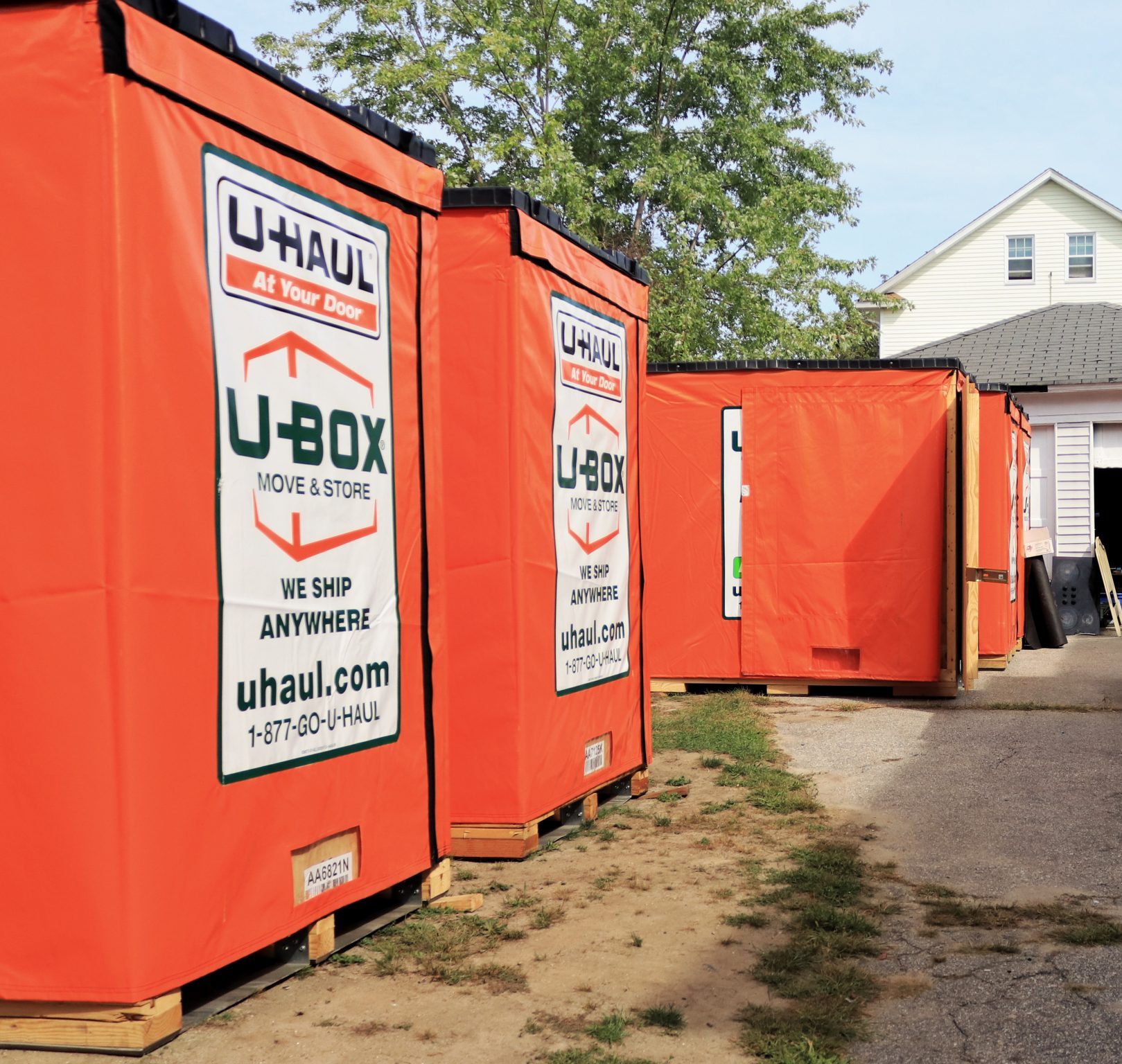U-Haul Trailers For Rental: Your Comprehensive Guide to Hassle-Free Hauling cars.truckstrend.com
Moving, decluttering, or transporting large items can often feel like a monumental task. While professional movers offer convenience, they can be costly, and renting a full-sized moving truck might be overkill for smaller loads or when you already have a capable towing vehicle. This is where U-Haul trailers for rental step in, offering a remarkably versatile, cost-effective, and practical solution for a myriad of hauling needs.
U-Haul, a household name synonymous with DIY moving, provides an extensive fleet of trailers designed to cater to diverse requirements, from a modest apartment move to transporting a car across state lines. These trailers empower individuals to take control of their logistics, providing the flexibility to move on their own schedule and at a fraction of the cost. This comprehensive guide will delve into everything you need to know about U-Haul trailers for rental, ensuring you’re well-equipped for your next hauling adventure.
U-Haul Trailers For Rental: Your Comprehensive Guide to Hassle-Free Hauling
Types of U-Haul Trailers: Finding Your Perfect Match
U-Haul offers several distinct categories of trailers, each engineered for specific purposes. Understanding these types is the first step in selecting the right equipment for your job.
1. Cargo Trailers (Enclosed)
These are perhaps the most common and recognizable U-Haul trailers. Fully enclosed, they offer protection from the elements and security for your belongings.
- Sizes: Available in various dimensions, typically ranging from 4’x8′ to 6’x12′.
- Uses: Ideal for moving household goods, furniture, boxes, and other items that require protection from weather or theft. Perfect for apartment moves, small house moves, or transporting sensitive equipment.
- Features: Low loading deck, heavy-duty ramp (on larger models), tie-downs, and a secure latching door.

2. Utility Trailers (Open)
Utility trailers are open-top trailers, designed for hauling irregularly shaped items, yard waste, construction materials, or anything that doesn’t require weather protection.
- Sizes: Common sizes include 4’x7′, 5’x8′, 5’x10′, and 6’x12′. Some models include a ramp.
- Uses: Excellent for landscaping projects, hauling lumber, appliances, motorcycles, ATVs, or general junk removal.
- Features: Low loading deck, sturdy sides, open-top design for easy loading/unloading, and some models include a loading ramp.
3. Auto Transport Trailers (Car Haulers)
These are heavy-duty, two-axle trailers specifically designed to transport vehicles.
- Sizes: Standard size designed to accommodate most cars, trucks, and SUVs.
- Uses: Ideal for moving non-running vehicles, classic cars, or transporting a second vehicle during a long-distance move.
- Features: Hydraulic surge brakes, security chains, easy-to-use ramps, and tie-down straps to secure the vehicle.
4. Tow Dollies
A more compact and often more affordable option for vehicle transport, tow dollies lift only the front wheels of the towed vehicle off the ground.
- Sizes: One standard size fits most passenger cars and small trucks.
- Uses: Best for front-wheel-drive vehicles, though some rear-wheel-drive vehicles can be towed backward with caution. Ideal for shorter distances or when an auto transport trailer is not available.
- Features: Lightweight, integrated ramps, and security chains. Some models include a steering axle for easier turning.
Benefits of Renting a U-Haul Trailer
Choosing a U-Haul trailer offers several compelling advantages over other moving or hauling options:
- Cost-Effectiveness: Often significantly cheaper than renting a moving truck, especially for smaller loads or when you already own a vehicle capable of towing.
- Flexibility: You use your own vehicle, meaning you only need to manage one set of keys and one fuel tank. This also allows for greater maneuverability and parking ease compared to a large truck.
- Convenience: With thousands of U-Haul locations across North America, picking up and dropping off a trailer is incredibly convenient, even for one-way rentals.
- Versatility: From furniture and appliances to landscaping materials and vehicles, there’s a U-Haul trailer designed for almost any hauling task.
- Safety Features: U-Haul trailers are designed with safety in mind, featuring low deck heights for easy loading, independent suspension for a smooth ride, and essential lighting. Auto transports include surge brakes for added stopping power.
- Reduced Fuel Costs: Towing a trailer with your personal vehicle can sometimes be more fuel-efficient than driving a large, less aerodynamic moving truck, depending on your vehicle’s MPG.
How to Rent a U-Haul Trailer: A Step-by-Step Guide
Renting a U-Haul trailer is a straightforward process, whether you do it online or in person.
-
Determine Your Needs:
- What are you moving? (Boxes, furniture, car, debris?)
- How much do you have? (Estimate volume/weight to choose the right size).
- What is your towing vehicle? (Check its towing capacity, hitch type, and wiring).
- Local or One-Way? (Local rentals are typically for 24-hour periods, one-way allows pickup in one city and drop-off in another).
-
Verify Your Towing Vehicle’s Capability:
- Hitch: Your vehicle must have a properly installed hitch receiver.
- Hitch Ball: Ensure you have the correct size hitch ball (U-Haul provides sizes with trailer information, usually 1 7/8" or 2").
- Wiring: Your vehicle needs a working wiring harness (4-pin flat connector for most trailers, 7-pin round for auto transports with electric brakes).
- Towing Capacity: Crucially, your vehicle’s Gross Vehicle Weight Rating (GVWR) and Gross Combined Weight Rating (GCWR) must exceed the loaded weight of the trailer. Consult your vehicle’s owner’s manual.
-
Make a Reservation:
- Online (Recommended): Visit UHaul.com or use the U-Haul app. This allows you to browse trailer types, check availability, get quotes, and reserve at your convenience. You’ll enter your pickup/drop-off locations, dates, and vehicle information.
- By Phone: Call U-Haul customer service.
- In Person: Visit a U-Haul neighborhood dealer or company-owned center.
-
Pickup Process:
- Arrive at your scheduled time with your driver’s license and towing vehicle.
- A U-Haul representative will verify your reservation and vehicle compatibility.
- They will assist you in hooking up the trailer, ensuring the hitch is secure, safety chains are attached, and lights are functioning correctly.
- Perform a quick walk-around inspection of the trailer for any existing damage and ensure the tires look good.
-
Return Process:
- Return the trailer to the agreed-upon location by the specified time.
- Park the trailer in the designated area.
- Un-hitch the trailer and return the contract/keys to the U-Haul representative or drop box as instructed.
Important Considerations Before Renting
To ensure a safe and efficient rental experience, keep the following in mind:
- Towing Vehicle Requirements: Reiterate the importance of matching your vehicle’s towing capacity (including tongue weight) to the trailer and its loaded contents. Overloading is dangerous and can lead to mechanical failure.
- Hitch and Wiring: A properly installed Class I, II, III, or IV hitch is essential. Confirm your electrical connector matches the trailer (most U-Haul trailers use a 4-pin flat connector, auto transports may require a 7-pin).
- Insurance Options: U-Haul offers optional coverage plans like "Safemove" and "Safetow." While your personal auto insurance might cover some liability, these plans offer additional protection for the trailer itself and your cargo. It’s wise to check with your personal insurance provider first.
- Loading and Weight Distribution: Proper loading is critical for safe towing. Place about 60% of the cargo weight in the front half of the trailer (closer to the hitch) and ensure the load is balanced side-to-side. Secure all items to prevent shifting.
- Driving with a Trailer:
- Speed: Drive slower than usual, especially on curves and during windy conditions.
- Braking: Allow significantly more stopping distance.
- Turns: Make wider turns to account for the trailer’s path.
- Backing Up: Practice in an empty lot if you’re new to it. Turn the steering wheel in the opposite direction you want the trailer to go.
- Mirrors: Utilize extended mirrors if necessary to see past the trailer.
- State and Local Laws: Be aware of varying speed limits for vehicles towing trailers, and any specific regulations regarding trailer brakes or vehicle requirements in states you’ll be traveling through.
Tips for a Smooth Trailer Rental Experience
- Reserve Early: Especially during peak moving seasons (end of month, summer), trailers can be in high demand.
- Know Your Load: Have a clear idea of what you’re moving to choose the correct trailer size and avoid multiple trips.
- Inspect Thoroughly: Before leaving the lot, check tires, lights, and the trailer body for any damage. Document it with photos if needed.
- Secure Your Load: Use appropriate tie-downs, ropes, or moving blankets to prevent items from shifting and causing damage or instability.
- Practice Driving: If you’re new to towing, find an empty parking lot to practice turns, braking, and especially backing up.
- Monitor Tire Pressure: Before and during your trip, check the tire pressure on both your vehicle and the trailer.
- Be Weather Aware: High winds, heavy rain, or snow can significantly impact towing safety. Adjust your plans if conditions are adverse.
- Return On Time: Avoid late fees by returning the trailer by your designated drop-off time.
Potential Challenges and Solutions
- Trailer Not Available: If your preferred size/type isn’t available at your closest location, expand your search radius or consider an alternative type that might still work. Reserving well in advance is the best solution.
- Vehicle Compatibility Issues: If your vehicle doesn’t meet the towing requirements, U-Haul will not rent you a trailer. Solution: Consider renting a U-Haul truck or borrowing/renting a more capable towing vehicle.
- Loading Difficulties: Heavy items or awkward shapes can be challenging. Solution: Use moving equipment like dollies, furniture pads, and ramps. Enlist help from friends or family.
- Driving Stress: Towing can be stressful, especially in heavy traffic or unfamiliar areas. Solution: Plan your route to avoid busy highways if possible, take frequent breaks, and don’t rush.
- Mechanical Issues: While U-Haul trailers are well-maintained, unexpected issues can occur. Solution: U-Haul offers 24/7 roadside assistance. Keep their number handy.
Estimated U-Haul Trailer Rental Prices
It’s important to note that U-Haul trailer rental prices are dynamic and vary significantly based on location, duration of rental (local vs. one-way), trailer type, and demand. The table below provides estimated starting prices for local, 24-hour rentals. For precise pricing, always obtain a quote directly from U-Haul’s website or by calling a representative.
| Trailer Type | Size Range | Typical Use | Estimated Local 24-Hr Rental Price (Approx. USD) | Notes |
|---|---|---|---|---|
| Cargo Trailer | 4’x8′ | Small loads, furniture, boxes | $14.95 – $24.95 | Enclosed, weather-protected. |
| 5’x8′ | Small apartment, more furniture | $19.95 – $29.95 | Most popular size for general moves. | |
| 5’x10′ | Larger apartment, 1-2 rooms | $29.95 – $39.95 | Offers more cubic feet. | |
| 6’x12′ | 2-3 rooms, larger furniture | $34.95 – $44.95 | Largest enclosed trailer, often with ramp. | |
| Utility Trailer | 4’x7′ | Small open loads, yard work | $14.95 – $24.95 | Open top, good for irregular items. |
| 5’x8′ | Landscaping, small equipment | $19.95 – $29.95 | Available with or without ramp. | |
| 5’x10′ | ATVs, motorcycles, building materials | $29.95 – $39.95 | ||
| 6’x12′ | Large equipment, multiple ATVs | $34.95 – $44.95 | Heavy-duty, often with ramp. | |
| Tow Dolly | Standard | Front-wheel drive vehicles | $49.95 – $69.95 | Lifts two wheels, more affordable car transport. |
| Auto Transport | Standard | Most cars, trucks, SUVs | $69.95 – $89.95 | Lifts all four wheels, includes surge brakes. |
Note:
- One-Way Rentals: One-way rental prices are typically higher than local rentals and are quoted based on distance and demand.
- Damage Coverage: Optional damage coverage (e.g., Safemove, Safetow) is an additional cost.
- Accessories: Moving blankets, dollies, and hitches are separate purchases or rentals.
- Taxes and Fees: Local taxes and environmental fees may apply.
Frequently Asked Questions (FAQ)
Q1: What do I need to tow a U-Haul trailer?
A1: You need a vehicle with a properly installed hitch receiver, a compatible hitch ball (usually 1 7/8" or 2"), and a working wiring harness (typically a 4-pin flat connector). Most importantly, your vehicle’s towing capacity must exceed the weight of the loaded trailer.
Q2: Do I need insurance for a U-Haul trailer?
A2: While your personal auto insurance might offer some liability coverage, U-Haul offers optional damage waiver plans (Safemove, Safetow) that cover damage to the trailer and your belongings. It’s highly recommended to check with your personal insurance provider and consider U-Haul’s coverage for peace of mind.
Q3: Can I rent a U-Haul trailer one-way?
A3: Yes, U-Haul offers one-way trailer rentals, allowing you to pick up a trailer in one city and drop it off in another. Prices for one-way rentals are generally higher than local rentals and are based on distance and availability.
Q4: What if my vehicle isn’t suitable for towing a U-Haul trailer?
A4: If your vehicle doesn’t meet U-Haul’s safety requirements (e.g., insufficient towing capacity, no hitch), they will not rent you a trailer. In this case, you would need to consider renting a U-Haul moving truck or finding an alternative towing vehicle.
Q5: How do I know what size trailer I need?
A5: Consider the volume and weight of the items you’re moving. U-Haul’s website provides helpful guides based on the number of rooms or types of items. When in doubt, it’s often better to go slightly larger than too small.
Q6: Are U-Haul trailers safe?
A6: U-Haul trailers are designed with safety features like low deck heights, independent suspension, and essential lighting. However, safe towing depends heavily on proper loading, adherence to weight limits, and responsible driving practices by the renter.
Q7: Do U-Haul trailers have brakes?
A7: Most smaller U-Haul cargo and utility trailers do not have their own braking systems and rely on the towing vehicle’s brakes. However, all U-Haul Auto Transport trailers are equipped with hydraulic surge brakes for added safety when hauling a vehicle.
Q8: Can I put a car on a utility trailer?
A8: No, U-Haul utility trailers are not designed or rated for vehicle transport. You must use either a U-Haul Auto Transport trailer (which carries all four wheels) or a Tow Dolly (which carries two wheels) for moving a vehicle.
Conclusion
U-Haul trailers for rental represent a cornerstone of accessible, do-it-yourself hauling and moving solutions. Their diverse range, coupled with U-Haul’s extensive network, makes them an incredibly valuable resource for individuals and families navigating life’s many transitions and projects. By understanding the types of trailers available, meticulously preparing your towing vehicle, and adhering to safe towing practices, you can leverage U-Haul’s offerings to achieve a seamless, cost-effective, and empowering moving or hauling experience. Taking control of your logistics has never been more straightforward or rewarding.



